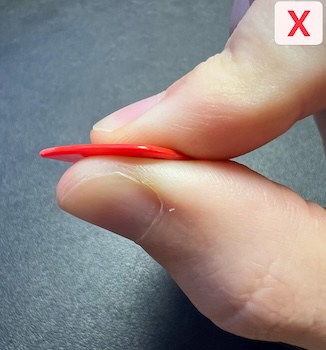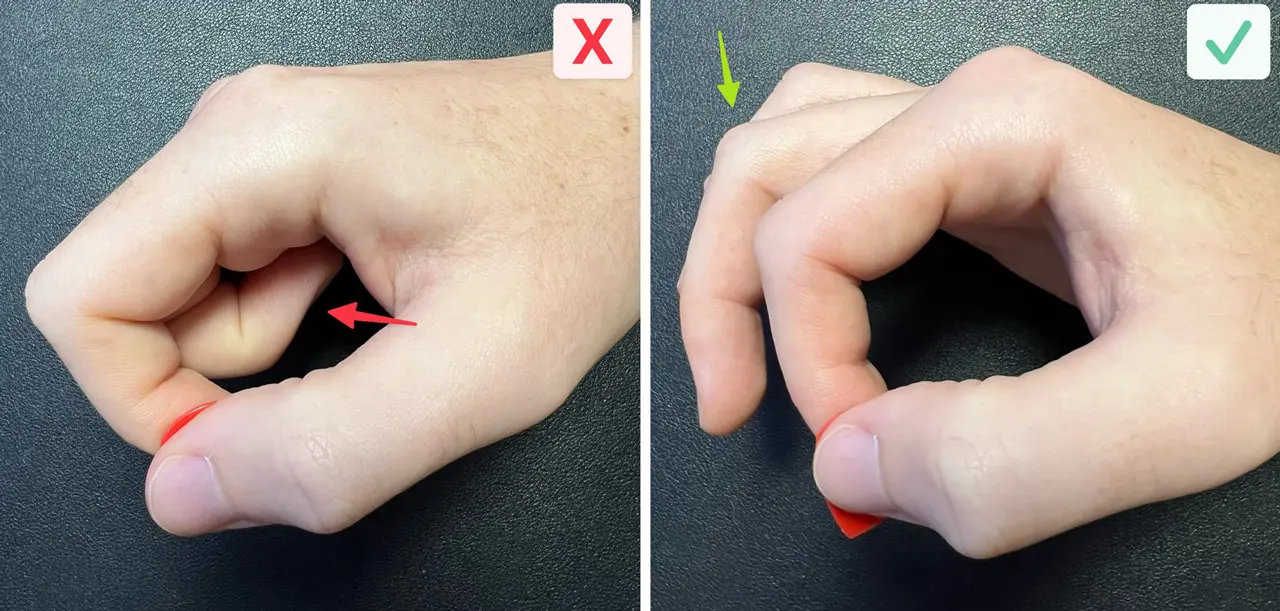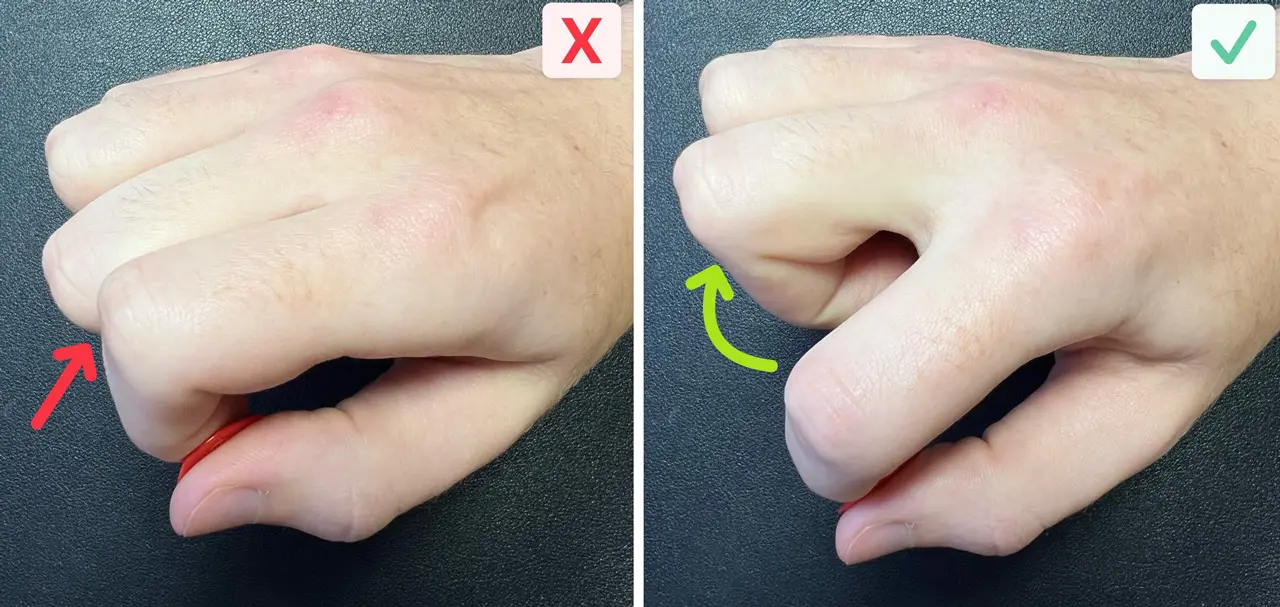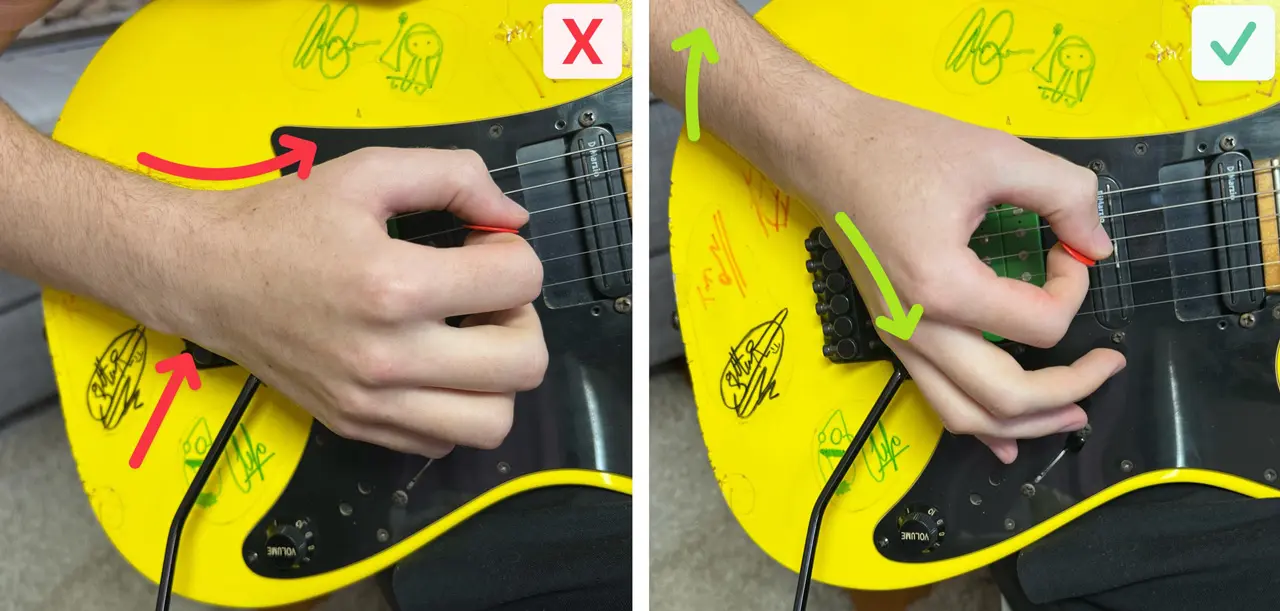Knowing how to hold a guitar pick properly is a crucial foundational skill in guitar playing – developing good habits here will prevent problems with advanced techniques down the line.
I’ve received countless comments from people who have watched the video above expressing that bad habits have hindered their progress, and that inheriting my tips has tremendously improved their speed and accuracy on the guitar.
I will start this off with an important disclaimer though. I realise that there is no “best way” that suits absolutely everyone! There will always be exceptions to the rule, but the tips I am sharing with you in this post are what I’ve found to be most helpful for the majority of people.
Take what you will from this post, even if it’s just one or two tips. Learning to pick properly will feel a little unnatural at first, just like most new skills. In the early stages of your progression, try to find a compromise between what feels comfortable and what feels right.
A small and strong pick with a sharp tip will set you off on the right track! I’ve tried countless over the years, and I always come back to the Dunlop Jazz III picks.
Picking Grip
First and foremost, hold your pick between your thumb and your first finger. Avoid using two fingers or relying solely on the middle finger. Utilise the thumb and finger for a stable grip.
Make sure the pick rests on the side of your first finger, not the flat part. The tip of the pick should face the same direction as your nail.

A common mistake is pinching the pick between the thumb and finger, in the same way you would pinch your nose.

Instead, aim to create a circle, as demonstrated in the next image.
Keep the other fingers slightly separated from the pick to reduce friction and unnecessary tension. By curling them up, you create a noticeable gap between the second and first finger.


I like to think of holding a guitar pick much like holding a pencil or paint brush.
Wrist & Finger Position
Next, remember to keep your wrist loose and relaxed. Avoid any tightness or tension in this area.
Now that you have a grasp on holding the pick, establish a reference point on the guitar bridge. I like to rest the ball part at the base of your palm on the top of the guitar bridge, and align the entire side of your palm down the bridge.

This position helps with accuracy. Avoid starting with your arm sideways, as it can lead to issues in playing accurately.

By aligning yourself properly with the bridge and having the ball of your hand on top, you’ll increase your chances of hitting the right notes at the right time 😉
Remember that this is a picking lesson, and the same rules don’t apply if you’re strumming. When strumming you do not want to anchor on the bridge. The pick grip remains the same, but there must be no anchor point on the bridge.
Picking Angle
Now that your hand is in the right place, your goal is to attack the strings at a 45 degree pick angle.

Don’t confuse picking direction with pick angle. Picking direction should naturally be vertical – up and down as you cross over the string. Picking angle though refers only to the angle of the pick.
It’s important that both your wrist and fingers are flexible and move with the motion of the pick.
Summary
By combining these reference points and the proper pick hold between your thumb and finger, you’ll establish a solid foundation for picking.
As a beginner exercise, try picking each string individually, gently moving the pick down and up. Focus on these key points rather than speed. Pay close attention to my demonstration in the video.
These tips encapsulate what I believe to be the most beneficial and comfortable methods from my favourite guitar players. I hope they help you as much as they’ve helped me and hundreds of thousands of other viewers around the world!
Keep practicing and good luck with your guitar journey!


